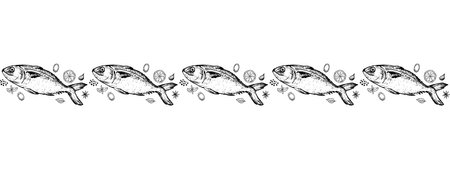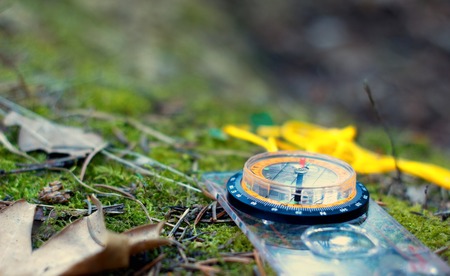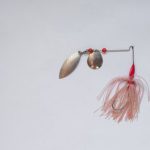1. Understanding Offshore Trolling Basics
Offshore trolling is one of the most exciting ways to catch big game fish in deep waters. Whether youre cruising the Gulf of Mexico, the Atlantic Coast, or off the shores of Southern California, understanding the basics is key to a successful trip. Let’s break down the essentials so you can hit the water with confidence.
What Is Offshore Trolling?
Offshore trolling involves dragging lures or baited lines behind a moving boat to attract large predatory fish. Its different from inshore fishing because youre targeting species that live in deeper, open ocean waters—often miles away from shore.
Popular Big Game Fish for Offshore Trolling
Here are some of the top trophy fish U.S. anglers chase while offshore trolling:
| Fish Species | Region Commonly Found | Best Season |
|---|---|---|
| Marlin (Blue & White) | Atlantic & Gulf Coasts | Summer to Early Fall |
| Tuna (Yellowfin & Bluefin) | Pacific & Atlantic Oceans | Spring through Fall |
| Dorado (Mahi-Mahi) | Southeastern U.S., Gulf, Pacific Coast | Late Spring to Fall |
| Wahoo | Florida Keys, Gulf Stream, Hawaii | Year-Round (Peak in Fall/Winter) |
| Sailfish | Southeast Florida & Gulf of Mexico | Winter to Early Spring |
Ideal Trolling Speeds by Target Species
The speed of your boat plays a huge role in getting bites. Different fish respond to different speeds depending on their natural feeding behavior.
| Fish Species | Recommended Trolling Speed (Knots) |
|---|---|
| Marlin | 7–9 knots |
| Tuna | 5–8 knots |
| Mahi-Mahi | 6–8 knots |
| Wahoo (High-Speed Trolling) | 12–18 knots |
| Sailfish | 4–6 knots |
How Ocean Conditions Affect Your Strategy
Water Temperature and Currents
Certain species prefer specific temperature ranges. For example, yellowfin tuna thrive in waters between 70°F and 80°F. Use temperature charts or onboard sonar systems to locate thermal breaks where predators often hunt.
Tide and Moon Phases
Tides influence bait movement and predator behavior. Many anglers find increased activity during incoming tides and around new or full moons when currents are stronger and baitfish more active.
Weather and Sea State
Choppy conditions can make trolling harder but sometimes produce better results as predators take advantage of disoriented bait. Calm seas allow for precise lure presentation but may require longer runs to find active fish.
Trolling Tip:
If you’re not getting hits, vary your speed slightly or try zig-zagging your trolling path to create more erratic lure movement—it can trigger aggressive strikes!
Tuning into these offshore trolling fundamentals will help you prepare for epic days on the water chasing monster game fish.
2. Essential Gear and Tackle Setup
When it comes to offshore trolling along the U.S. coastline—whether youre off the coast of Florida, chasing mahi-mahi in the Gulf, or targeting tuna in the Northeast—having the right gear makes all the difference. Let’s break down the essential equipment you’ll need to maximize your chances of hooking big game fish.
Rods and Reels
For offshore trolling, you’ll want heavy-duty rods and high-capacity reels that can handle powerful runs and large fish. Look for trolling rods rated between 30 to 80 pounds, with roller guides to reduce friction on the line during long battles. Pair them with conventional reels that offer high line capacity (at least 600 yards of 50-80 lb braided or monofilament line) and strong drag systems.
Recommended Rod & Reel Combos:
| Rod Type | Reel Type | Best For |
|---|---|---|
| 30-50 lb Stand-Up Rod | Lever Drag Conventional Reel | Mahi-mahi, Kingfish |
| 50-80 lb Trolling Rod with Roller Guides | Two-Speed Conventional Reel | Tuna, Wahoo, Marlin |
| Bent Butt Rod (80+ lb) | Electric or High-Torque Reel | Deep-dropping & Swordfish |
Lures and Baits
The type of lure you choose depends on your target species and trolling speed. Skirted trolling lures are ideal for high-speed trolling for wahoo or tuna, while rigged ballyhoo with a sea witch is a favorite for mahi-mahi and billfish. Always carry a variety of sizes and colors to adapt to water clarity and light conditions.
Popular Offshore Lures:
- Skirted Lures – Best for tuna, marlin, wahoo
- Diving Plugs – Good for king mackerel and mahi-mahi
- Cedar Plugs – Proven tuna killer in U.S. waters
- Ballyhoo Rigs – Classic bait for sailfish and dolphin fish
Outriggers and Downriggers
To cover more water and reduce tangles when running multiple lines, outriggers are key. They allow you to spread your lures away from the boats wake, mimicking a bait school. Downriggers help present lures at deeper depths, especially when targeting species like grouper or kingfish.
Trolling Spread Tip:
A standard offshore spread might include two flat lines out the back, two lines on outriggers, one shotgun line farthest back, and one deep-line using a downrigger.
Electronics: Fish Finders & GPS Systems
A quality marine electronics setup is just as important as your tackle. A good fish finder helps locate bait balls and thermoclines where pelagic fish often hunt. GPS chartplotters let you mark productive areas like reefs, ledges, or weed lines so you can return to them later.
Must-Have Electronics:
- Multi-function Display (MFD) with CHIRP sonar
- Autopilot system for maintaining steady troll speeds
- Radar for tracking birds—a sign of feeding activity offshore
- VHF Radio for safety and communication with nearby boats
With this essential gear dialed in, youre set up for success when trolling U.S. coastal waters for trophy-sized game fish.

3. Bait Selection and Rigging Techniques
When it comes to offshore trolling, choosing the right bait and rigging it properly can make or break your fishing trip. Whether youre chasing marlin, tuna, or mahi-mahi, the right presentation is key to getting those game fish to bite. Let’s break down your options and show you how to rig them for maximum hook-up success.
Live Bait vs. Dead Bait vs. Artificial Lures
Each type of bait has its strengths depending on the species youre targeting, water conditions, and personal preference. Heres a quick comparison:
| Bait Type | Pros | Cons | Best For |
|---|---|---|---|
| Live Bait | Natural movement attracts more strikes; effective for finicky fish | Requires livewell; more delicate to handle | Marlin, Sailfish, King Mackerel |
| Dead Bait | Easier storage; good scent trail in water | Needs proper rigging to swim naturally | Tuna, Wahoo, Mahi-Mahi |
| Artificial Lures | No maintenance; reusable; covers large areas quickly | May be less effective in clear or pressured waters | Dorado (Mahi-Mahi), Tuna, Wahoo |
Popular Rigging Techniques
Live Bait Rigging
Use circle hooks for better hook-up ratios and fish safety. Hook the bait through the nose or back depending on trolling speed and desired swimming action. Keep your speed under 3 knots to avoid stressing the bait.
Dead Bait Rigging
Ballyhoo is a go-to dead bait option. Use a pin rig or chin weight with a skirt to keep the bait streamlined and prevent spinning at higher speeds. Add a stinger hook if targeting short-striking fish like wahoo.
Artificial Lure Rigging
Lures like skirted trolling lures, jet heads, and cedar plugs are great for covering ground fast. Match lure size and color to target species and conditions—bright colors for sunny days, darker hues for overcast weather. Use crimped leaders with swivels to reduce line twist.
Tips for Better Hook-Ups
- Sharpen Your Hooks: Even brand-new hooks may need touching up.
- Match Hook Size: Use a hook that matches the bait size—not too big or too small.
- Adjust Leader Length: Longer leaders help with spooky fish; shorter ones offer better control.
- Add Teasers: Daisy chains or squid bars increase visibility and attract more bites.
Selecting the right bait and mastering how to rig it properly will dramatically improve your chances when trolling offshore. Its all about presenting something irresistible—and doing it the right way every time you let a line out.
4. Trolling Strategies and Boat Handling
When it comes to offshore trolling, having a solid game plan is key. You’re covering a lot of water out there, so every move your boat makes and every lure you deploy should have a purpose. Let’s break down the core elements that help you troll smarter—not harder—so you can raise more fish and land that trophy catch.
Trolling Patterns That Work
The way you move your boat through the water directly affects how your lures swim and how visible they are to predatory fish. Here are some tried-and-true trolling patterns:
| Pattern Name | Description | Best Use Case |
|---|---|---|
| Zig-Zag | The boat weaves left and right, changing angles frequently. | Covers more area; mimics baitfish fleeing predators. |
| S-Curve | Smooth, wide turns in an “S” shape pattern. | Great for varying lure speeds and presentations naturally. |
| Straight Line | A consistent, straight path over targeted spots. | Ideal when working known productive areas like weed lines or current edges. |
| Cloverleaf | A looping pattern around specific structure or GPS marks. | Keeps lures in the strike zone longer near underwater features. |
Lure Placement: Positioning for Success
Your trolling spread needs to mimic a school of baitfish to trigger strikes. Think about where each lure sits in the water column and how far it trails behind the boat. Heres a basic breakdown:
Lure Positioning Tips:
- Short Corner: Closest to the transom, often used for larger lures targeting aggressive species like marlin or tuna.
- Long Corner: Slightly farther back; good for medium-sized lures with erratic action.
- Short Rigger: Placed on the outriggers at mid-distance; great for attracting fish from wider angles.
- Long Rigger: Furthest back on the outriggers; often used for stealthy presentations when fish are wary.
- Shotgun: The farthest line, usually centered off a center rigger or flat line; perfect for skittish pelagics like mahi-mahi or wahoo.
Trolling Speed Matters
The speed you troll can make or break your day. Different species respond to different speeds, and even slight adjustments can trigger bites. Here’s a quick guide:
| Target Species | Trolling Speed (Knots) |
|---|---|
| Mahi-Mahi (Dolphin) | 6–8 knots |
| Tuna (Yellowfin/Bluefin) | 5–7 knots |
| Sailfish/Marlin | 7–9 knots |
| Wahoo | 9–14 knots (high-speed trolling) |
Maneuvering Your Boat Like a Pro
Your boat is part of your trolling spread—it dictates lure action, positioning, and ultimately whether or not you get bit. Good captains are always adjusting their course based on current, wind, and bird/fish activity. Here are some tips to handle your boat like a seasoned offshore angler:
- Avoid sharp turns: They cause lures to tangle or lose their natural action.
- Slight course changes: Helps give lures new movement and can trigger reaction strikes from trailing fish.
- Pace into current/wind when needed: Helps keep lines tight and lures tracking properly.
- Bait school behavior: Watch birds, flying fish, and surface boils—adjust course toward signs of life without spooking them.
- Kite fishing combo:If conditions allow, combine kite fishing with trolling in calm seas for added chances at sails or tuna near the surface.
The Key Is Efficiency
Trolling offshore is all about maximizing your time on productive grounds. By using smart patterns, proper lure placement, ideal speeds, and skilled boat handling, you increase your odds of connecting with big game fish while making every mile count. Stay observant, make small adjustments as needed, and be ready when the reel starts screaming!
5. Finding and Targeting Big Game Hotspots
When it comes to offshore trolling, knowing where to fish is just as important as how you fish. The open ocean is vast, but seasoned American anglers rely on a few key environmental clues and tools to find those trophy-worthy hotspots where big game fish like tuna, marlin, mahi-mahi, and wahoo are most likely to be feeding.
Use Water Temperature to Your Advantage
Big game species tend to favor specific temperature ranges. For example, yellowfin tuna prefer water between 72°F and 82°F. By monitoring surface temperatures with your onboard electronics or through satellite data services, you can narrow down areas where these predators are likely to be hunting bait.
Preferred Water Temperatures for Common Offshore Species
| Species | Ideal Temperature (°F) |
|---|---|
| Yellowfin Tuna | 72 – 82 |
| Dorado (Mahi-Mahi) | 70 – 85 |
| Blue Marlin | 75 – 85 |
| Wahoo | 72 – 80 |
Follow the Current Lines and Breaks
Current lines, or rips, form where different water masses meet. These areas often collect floating debris and plankton, which attract baitfish—and in turn, big predators. Look for color changes in the water or slick surfaces that indicate a current break. Trolling along these lines can increase your chances of a strike.
Bait Concentration Is Key
If you find the bait, youll usually find the fish. Use sonar and fish finders to detect large schools of baitfish like sardines or flying fish. Birds diving into the water are another great sign—especially frigatebirds and terns—as they often signal feeding activity below the surface.
Signs That Indicate Bait Presence
- Diving birds (especially in groups)
- Bait balls visible on sonar/fish finder
- Surface splashes or shimmering schools near the topwater
- Floating debris attracting small fish and sea life
Leverage Electronic Charts and Marine Mapping Tools
Modern marine electronics like GPS plotters and digital charts from Navionics or C-MAP allow you to identify underwater structures such as seamounts, drop-offs, ledges, and humps—all prime hangouts for big game species. Many of these tools also include user-generated content showing popular fishing spots used by local anglers.
Top Chart Features for Finding Hotspots:
- Depth contours: Look for sudden changes indicating structure.
- User waypoints: Shared locations marked by other anglers.
- Tidal info: Helps predict feeding windows based on movement of water.
- SST overlays: Sea Surface Temperature maps help match species with ideal conditions.
The more time you spend learning how to read the ocean and using your gear effectively, the better youll get at finding those offshore sweet spots that produce monster bites trip after trip.
6. Safety, Regulations, and Conservation Practices
When youre heading offshore for a day of trolling big game fish like marlin, tuna, or mahi-mahi, its not just about the gear and the catch—you need to stay safe, follow the law, and fish responsibly. Offshore waters can be unpredictable, and understanding U.S. regulations and conservation practices is crucial for a successful and sustainable trip.
Boating Safety Essentials
Before you even cast your lines, make sure your boat is equipped with all the essential safety gear. The U.S. Coast Guard requires certain items on board for offshore trips. Heres a quick checklist:
| Required Safety Equipment | Description |
|---|---|
| Life Jackets (PFDs) | One for each person onboard; Type I recommended for offshore |
| VHF Radio | For emergency communication; channel 16 is monitored by the Coast Guard |
| EPIRB (Emergency Position Indicating Radio Beacon) | Sends distress signal with your location to rescue services |
| Flares & Visual Signals | MUST-HAVE for visibility in case of emergency |
| Fire Extinguisher | Easily accessible and in working condition |
| First Aid Kit | A well-stocked marine kit that includes seasickness remedies |
Navigational Awareness
Keen attention to weather forecasts, nautical charts, GPS navigation systems, and radar can help you avoid dangerous situations. Always file a float plan with someone on land before heading out.
Understanding U.S. Offshore Fishing Regulations
The National Oceanic and Atmospheric Administration (NOAA) manages most federal waters starting 3 miles offshore. Each state may have its own rules closer to shore, so its important to know both sets of regulations.
Main Regulatory Points to Follow:
- Permanently carry a valid fishing license: Whether youre a resident or non-resident angler, licenses are required for saltwater fishing.
- Acknowledge bag limits and size restrictions: These vary by species and region. For example, bluefin tuna has strict quotas.
- No-fishing zones: Marine Protected Areas (MPAs) may restrict fishing activity entirely—always check local maps.
- Tournament rules: If participating in an offshore tournament, understand that additional rules may apply regarding catch-and-release or weigh-in protocols.
Sustainable Fishing Practices
Catching trophy fish is thrilling, but protecting the oceans future means making responsible choices today. Here’s how you can help conserve big game fish populations while still enjoying the sport:
Sustainable Practices for Offshore Trolling:
- Circular hooks: Use non-offset circle hooks to reduce injury to released fish.
- Catch-and-release techniques: Handle fish carefully with wet hands or gloves; use dehooking tools to minimize harm.
- Avoid overfishing hotspots: Rotate fishing locations to allow populations time to recover.
- No littering: Dispose of monofilament lines and other waste properly; marine debris harms sea life.
- Selective harvest: Only keep what you’ll eat; release the rest safely back into the water.
Your Role as a Responsible Angler
If every angler takes safety seriously, respects regulations, and fishes sustainably, we can enjoy offshore trolling adventures for generations to come. Know the rules, prepare for the unexpected, and always respect the ocean—that’s what makes a true offshore pro.


